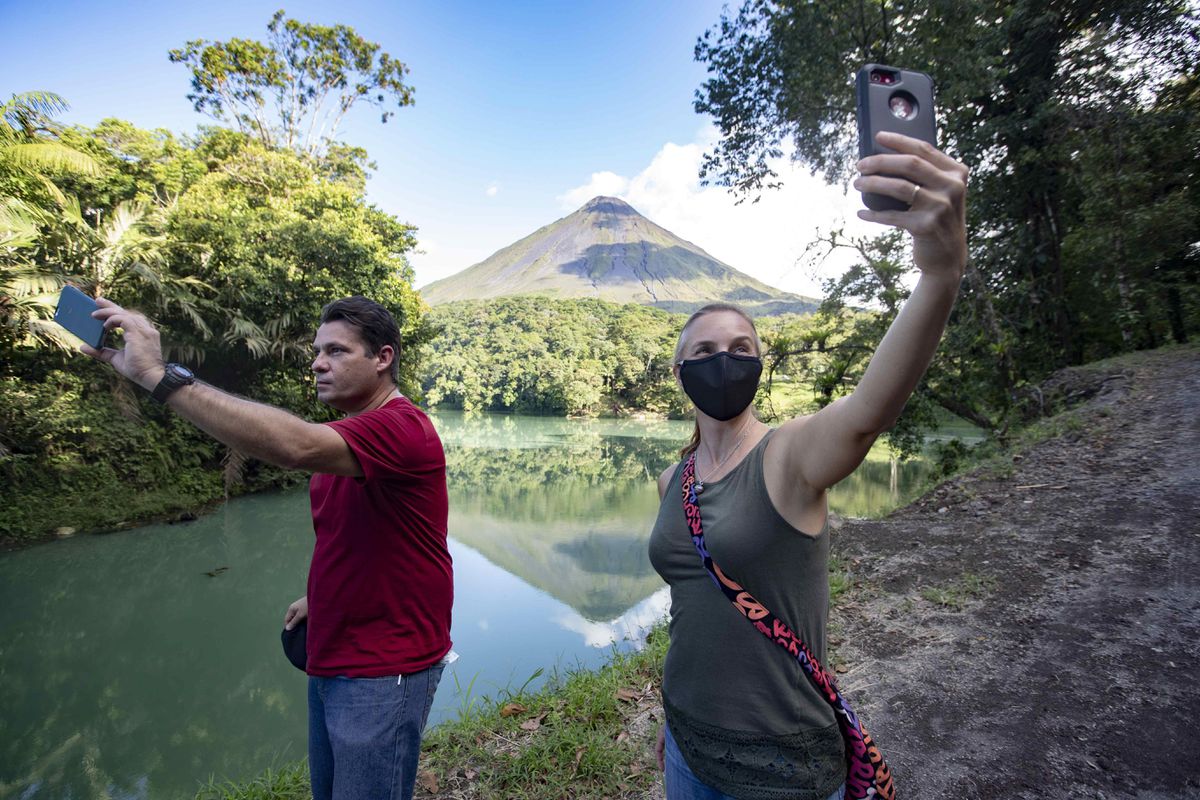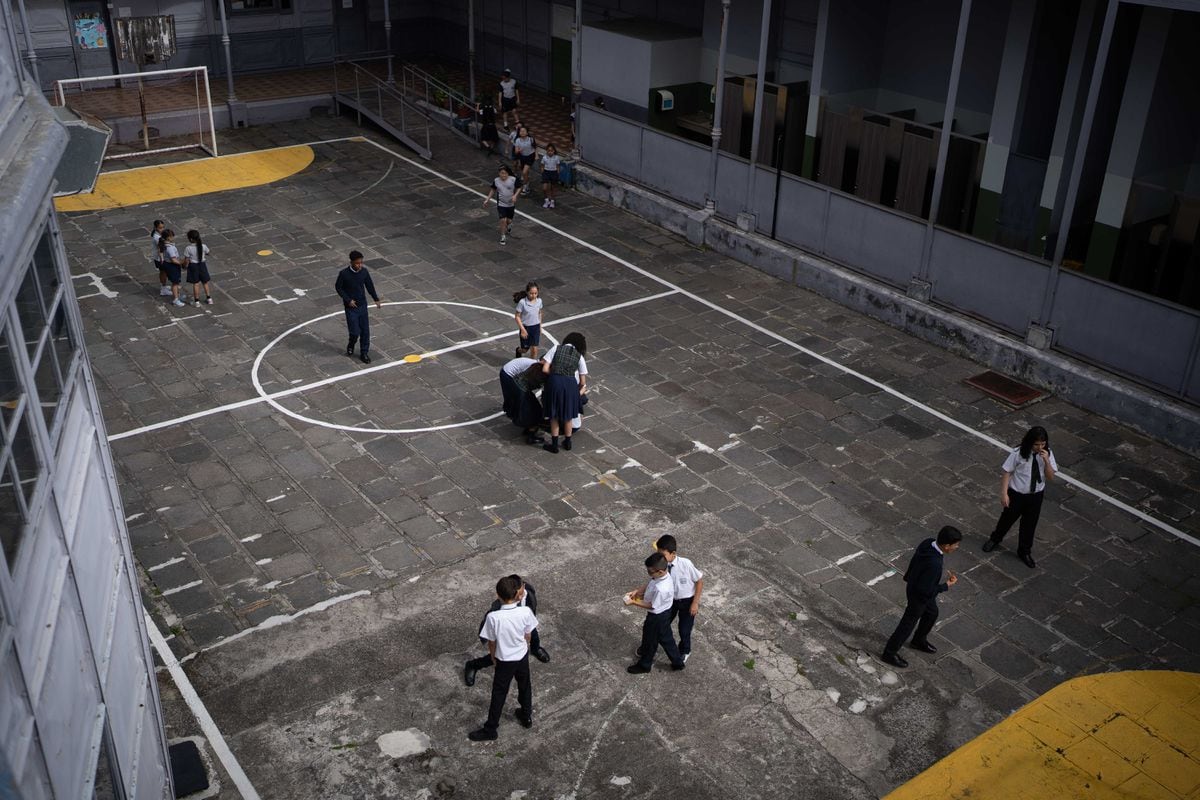Olger Núñez says that when he wakes up every morning he feels the owner of the universe, a sensation that invades him just by opening his eyes in the middle of a small island in Costa Rica.
The song of the birds, the sound of the wind that shakes centuries-old trees and the swaying of the immense sea, immerse you every day in the benefits of nature.
Núñez is the administrator of the Isla San Lucas National Park, the island of exile for the most violent prisoners in this country, which became a tourist paradise.
Seducers with a mask: this is the courtship of an enigmatic species of bat that lives in Costa Rica
By far it is difficult to imagine that this 500-hectare island with spectacular fauna and flora, was for more than a century one of the most feared sites in Costa Rica.
San Lucas Island is located 8 kilometers from Puntarenas, in the central Costa Rican Pacific.
Once in place, the old structures, historical and architectural heritage, are the most visible testimony of the prison that operated there from 1873 to 1991.
Coast of Isla San Lucas.
The transformation of a historic prison
Abandoned for years, it seeks to become one of the main tourist attractions in the area.
The island was declared a Wildlife Refuge since 2001 by executive decree of the Ministry of Environment and Energy (MINAE).
And last August, it opened its doors to tourists, with restrictions due to the covid-19 pandemic.
At that time, President Carlos Alvarado signed the law that names it the 30th National Park in the country.
Alvarado defined it as the axis of the San Lucas Island Reactivation Route, with the aim of generating a destination that enhances the tourism industry of Puntarenas and the Gulf of Nicoya, where it is located.
According to the National System of Conservation Areas, SINAC, to enter the island, visitors in groups must apply the rule of social bubbles.
In other words, arriving at the national park only with those who live in the house on a daily basis, to combat covid-19.
Also keep a distance of 1.8 meters between each bubble and bring water, soap, alcohol gel, disinfectant towels, a mask and a face shield.
advertising
Tourist attraction
For the Minister of Tourism of Costa Rica, Gustavo Segura, the island of San Lucas is unique.
«There is no other in Costa Rica with its attributes: former convict, historical memory, archaeological wealth and natural wealth.
All a short distance from the coast.
Tourism goes hand in hand with culture, for this reason we celebrate its opening, "he said.
Among trails where at some point there was interest in building hotels, howler monkeys, spiders, squirrels, armadillos, pheasants, deer, bats, raccoons, birds have their habitat.
A varied fauna that captures visitors.
The walls of what survives of the penal center speak.
Drawings, phrases, paintings, poems, songs, the relief of hundreds of inmates were captured there and today they are part of the attractions of the place.
Between strokes and words they tell their anguish, dreams and wishes for freedom, like traces of tormented lives.
Devil's island
“It was one of the most gruesome places.
It was also called the Devil's Island, it violated all human rights.
This is how the Costa Rican writer José León Sánchez describes the place where he was imprisoned for 19 of the almost 30 years that he remained in jail.
The others, he says, were spent in the Central Penitentiary of San José.
This site became in 1994 the Costa Rican Center for Science and Culture, a complex that houses the Children's Museum.
José León Sánchez, upon receiving the National Prize for Culture, Magón 2017. (Credit: Ministry of Culture
Today, at 91 years old, Sánchez assures that San Lucas Island will become an exceptional tourist destination, which will lift the area out of poverty.
The writer told CNN that he learned to read and write on the island.
He also took his first steps in literature there with his story
The Poet, the Boy and the River
in 1963. This opened the way for 27 more literary works.
Among them, the one that recreates the torment of life in prison:
The island of lonely men
.
According to the Costa Rican journalist and writer Carlos Cortés, it made prison literature fashionable in Latin America.
And he added that with
Tenochtitlán
, another of Sánchez's works, he achieved two of the
most popular
best sellers
in the region's publishing industry, with translations into numerous languages.
Sánchez was charged and later convicted of "homicide on the occasion of theft" of the jewels of the Basilica of Our Lady of the Angels.
Events that took place on May 13, 1950 in Cartago, a province near San José, the capital.
He arrived in San Lucas at the age of 19.
He says that the original manuscript of
The Isle of Alone Men
was written in pencil on the paper where the cement that reached the place was wrapped.
The first printed edition was made on the island with a wooden polygraph that he himself built.
José León Sánchez explains that from prison he always asked that his case be reviewed, because with torture they made him responsible for crimes he did not commit.
In 1999, the Supreme Court of Justice agreed with him and granted him the benefit of
In dubio pro reo
, after declaring the ineffectiveness of the ruling handed down against him on October 21, 1955 by the Second Criminal Chamber, which ordered him to deduct 45 years in prison, a sentence that was lowered to 30 years.
Past and present
His artistic account remains of what was the confinement on the island, which many will be able to read during a vacation trip to the new national park.
According to Núñez, trails, new sanitary services, a collection center, the water pumping system have already been set up and the old medical clinic building has been rehabilitated.
(Credit: Courtesy of the Presidency of Costa Rica)
The office of first lady Claudia Dobles, who coordinates the Reactivation Route, reported that it is expected to invest 2.4 million dollars to recover the infrastructure.
Part of the heritage area has already been intervened and the building of the old medical dispensary has been rehabilitated.
The intention is that the visit to the park becomes a unique experience, capable of abstracting anyone from their daily lives.
Also that, unlike its former tenants, whoever arrives yearns to return to dive between nature and history.


/cloudfront-eu-central-1.images.arcpublishing.com/prisa/HLK7GOESWRBMZA2KE2VATJISN4.jpg)


/cloudfront-eu-central-1.images.arcpublishing.com/prisa/5OEFXRUP6BFYRM3645I2WOWNVQ.jpg)
/cloudfront-eu-central-1.images.arcpublishing.com/prisa/ETGSMPG4ZNFJFFLVSLKB3DWPSQ.jpg)


/cloudfront-eu-central-1.images.arcpublishing.com/prisa/CDLMN2QW2RHKPMWXAHXMURZ2NA.jpeg)